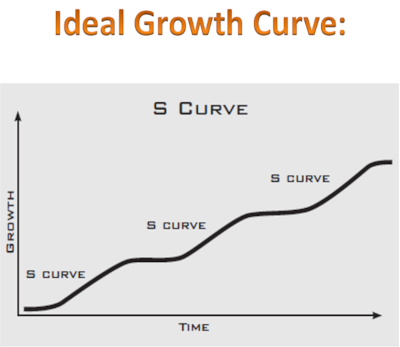With the racing speed of change and adaptation necessary, the businesses future becomes less certain. While the last two years we spent asking ourselves how to survive and adapt, now is the time to ask what is our organization’s potential in light of new technology, evolving business models, demographic evolution, and changing value systems of our customers and consumers. The period of time a company lasts on the New York Stock Exchange is a third of what it was 50 years ago. Business models of yesterday don’t generate the level of growth they used to, and in fact are often overtaken by the “blindside” where new models are brought to the industry by wild card players. You must be able to see what is coming up on your shoulder, and most often it is NOT from the expected competition.
I can’t help but reference the recent Kentucky Derby race as a great illustration of what happens when you ignore “new” entrants. Rich Strike, with odds of 80 to 1, had no Derby experience and neither did his jockey. But they had aspirations, knew how the game was played, and took advantage of opportunities. Companies that assume they will continue as they always have may end up like Epicenter—edged out. According to a recent article by Chris Zook and James Allen, both of Bain & Company, the “risk of inaction is high”. They report that their studies show that more than 60% of public companies have stalled out in the last five years; they are stagnant, underperforming market averages with low-single-digit-growth. They go on to say that if a company has experienced a downward trend for 10 years or more there is only a 20% chance they can reverse that. But it can be done and fortunately, we been a part of that process. At that point, the degree of change required is not for the faint of heart!

The goal is to set your strategic sites on establishing an “S” curve. Expanding the potential of your company, creating value through profitable growth, and looking for new paths to take the industry lead. The single biggest issue for companies when they approach maturity is recognizing it, followed closely by whether they respond to it by working harder on the same things or are open to changing the business to capitalize on new trends. One of the most notable companies who has been the poster child of the S curve is Apple. They are proactive in bringing new products and now new services to market on a regular cadence. Computers were followed by the iPod, iPhone, iPad, the Apple watch and now we see Apple extending into service offerings. https://www.titlemax.com/discovery-center/lifestyle/every-product-apple-has-made-so-far/

While realization of the need to develop effective strategic direction based on the current capabilities and market trends is the first big step, the second is asking and answering the question “What is our potential as a business?”. The only way to answer that question is with data–not from operations and historical financials-but of the market changes or an “outside-in” perspective. Pay attention to what other successful companies are doing and not just in your industry. Which companies have reinvented themselves and what did they do to achieve it? What are your customers asking for that you can’t deliver easily now? Are there industry problems you can solve?
What kind of changes are significant enough to create future value? It is not adding a product or a line extension. It involves changing the way an industry works. Take a Kansas City based company American Direct for example. They were founded in 1972 as a door supplier. Today, after strategic reinvention and skillful industry management they are now into building access which unites doors with security controls, building systems and integrating across multiple vendors to offer total security solutions. They combined their core with the technology of the future to offer much more value to their customers.
If you are a manufacturer, check out this article. Most manufacturers have a very difficult time establishing and maintaining competitive advantage in the information age where everybody knows everything if they look hard enough. Many manufacturers are bundling products with services as American Direct has. It changes the game because customers get more and can’t directly compare parts prices. Another client group who distributes parts for fluid system management, have begun to do assemblies of parts and provide engineered solutions that improve the overall functionality of the fluid system rather than just provide parts for their customers’ use. According to Zook and Allen, over half of companies who leaned into an S curve did so by building on the core business assets but drawing on new technologies. Adding internet capabilities or artificial intelligence to monitor parts, gives the supplier a world of knowledge the customer doesn’t have about their systems and an opportunity to develop recurring revenue through predictive maintenance while improving overall productivity of the system. Acquisitions are often one means of acquiring the new functions needed to reinvent the future.

When is the last time your company asked, “What is our potential?” or “If we wanted to take over this industry what would we do”? Value creation doesn’t happen in daily operation very often anymore. It occurs when leaders are willing to step back and ask the tough questions, gather data that points the way and then generate commitment to make it happen. Questions? Where to start? Reach out and ask here!

